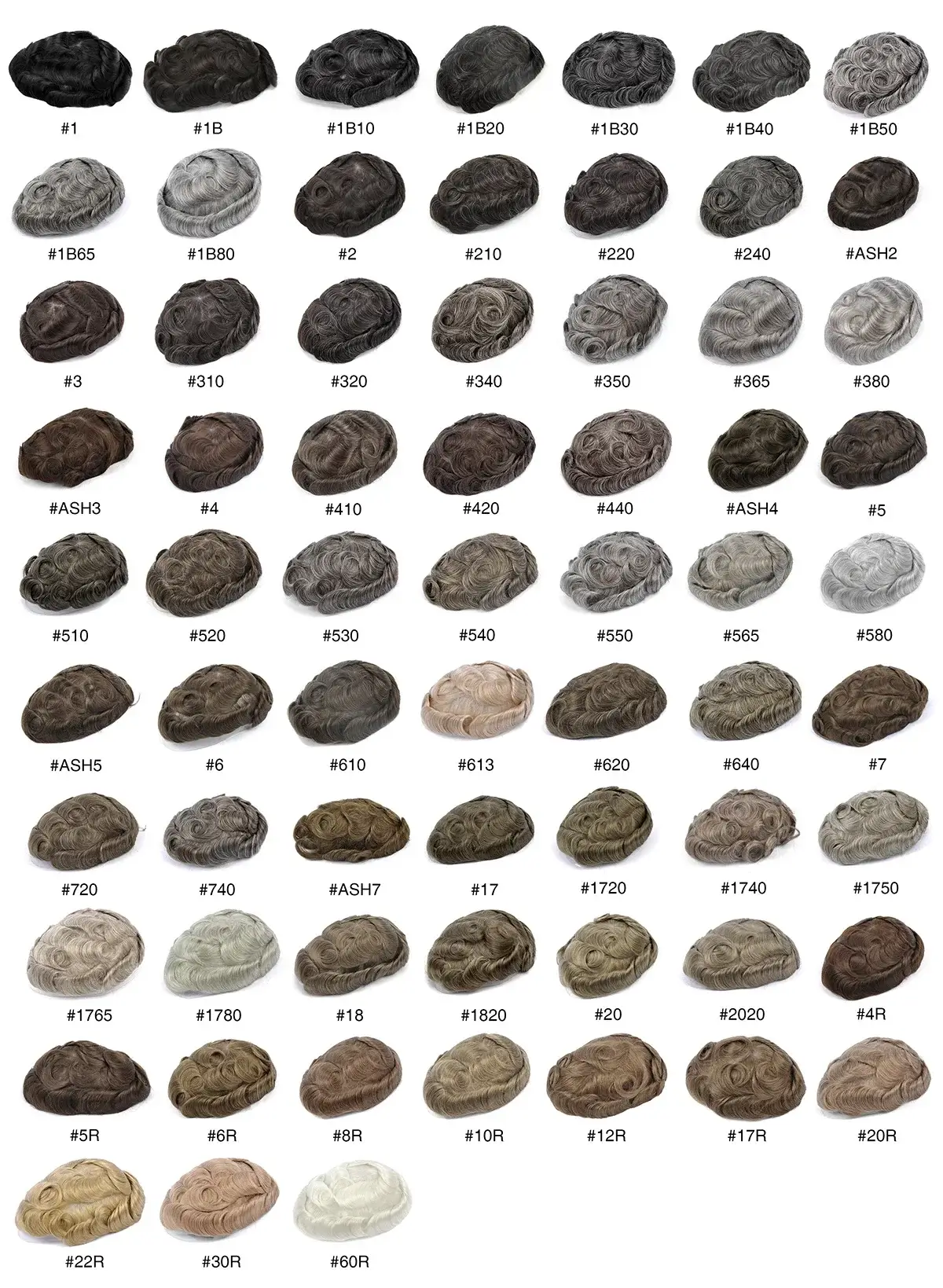Features of a Toupee
- Coverage:
- Partial Coverage: A toupee is designed to cover only a portion of the scalp, typically the top or crown area. Unlike a full wig, it does not cover the entire head, allowing it to blend seamlessly with the wearer’s natural hair.
- Materials:
- Human Hair: Offers the most natural look and feel. Human hair toupees can be styled, cut, and dyed like natural hair but require more maintenance and are typically more expensive.
- Synthetic Hair: Made from synthetic fibers, these toupees are more affordable and easier to maintain. They come pre-styled and hold their shape well but may not look as natural as human hair.
- Blended Hair: Combines both human and synthetic hair, offering a balance of natural appearance and durability.

- Attachment Methods:
- Adhesives: Glue or tape is used to attach the toupee to the scalp, providing a secure fit that can last for several days.
- Clips: Small clips sewn into the toupee attach to the existing hair, offering a quick and easy attachment method.
- Weaving or Bonding: Some toupees are integrated with the natural hair through weaving or bonding techniques for a more permanent solution.
- Customization:
- Color and Texture: Toupees are often customized to match the wearer’s natural hair color and texture for a seamless blend.
- Styling: Human hair toupees can be styled and cut according to the wearer’s preference, while synthetic toupees come pre-styled and may have limited styling options.

Usage and Maintenance
- Daily Wear: Toupees can be worn daily to conceal areas of hair loss, enhancing the wearer’s appearance and confidence. Proper attachment methods ensure they stay in place throughout the day.
- Care: Toupees require regular cleaning and maintenance. Human hair toupees need to be washed and conditioned with appropriate products, while synthetic toupees should be cleaned with specially formulated shampoos and conditioners. Proper storage on a wig stand is recommended to maintain the toupee’s shape and prevent tangling.
Target Audience
- Men: Toupees are most commonly used by men experiencing male pattern baldness, which typically affects the top and crown areas of the scalp.
- Women: Women with localized hair thinning or specific areas of hair loss may also use toupees to enhance their hair volume and appearance.
Psychological Impact
- Boosts Confidence: Wearing a toupee can significantly improve self-esteem and confidence, especially for those who feel self-conscious about their hair loss. It offers a non-surgical solution that helps individuals regain their youthful appearance and feel more comfortable in social and professional settings.

In summary, a toupee is a versatile and effective solution for individuals dealing with partial hair loss. Its ability to blend with natural hair and the variety of available materials and attachment methods make it a popular choice for those looking to improve their appearance and regain confidence.
A wig is a headpiece made from human hair, synthetic fibers, or a combination of both, designed to cover the entire scalp. Wigs are used by individuals for various reasons, including hair loss due to medical conditions such as alopecia or chemotherapy, cosmetic purposes, and fashion. They come in a wide array of styles, colors, lengths, and textures, providing the wearer with the flexibility to change their appearance as desired.

Features of a Wig
- Coverage:
- Full Coverage: A wig covers the entire scalp, providing a complete head of hair. This makes it suitable for individuals experiencing total hair loss or those who want to completely change their hairstyle.
- Materials:
- Human Hair: Offers the most natural look and feel. Human hair wigs can be styled, cut, and dyed just like natural hair, but they require more maintenance and are generally more expensive.
- Synthetic Hair: Made from synthetic fibers, these wigs are more affordable and easier to maintain. They come pre-styled and hold their shape well, but may not look as natural as human hair wigs.
- Blended Hair: Combines human and synthetic hair, offering a balance of natural appearance and durability.
- Attachment Methods:
- Adjustable Straps: Most wigs come with adjustable straps that allow for a customized fit.
- Combs and Clips: Built-in combs or clips can be used to secure the wig to the natural hair.
- Adhesives: Some wigs, particularly lace front wigs, can be attached using glue or tape for a more secure and natural look.
- Elastic Bands: Some wigs come with elastic bands that provide a snug fit without the need for additional attachments.
- Customization:
- Color and Style: Wigs are available in a variety of colors, styles, and lengths. Human hair wigs can be further customized with cutting, styling, and coloring.
- Texture: Wigs come in different textures, such as straight, wavy, or curly, to match the wearer’s preference.

Usage and Maintenance
- Daily Wear: Wigs can be worn daily to provide a natural appearance and boost the wearer’s confidence. They are easy to put on and take off, making them convenient for regular use.
- Care: Wigs require proper maintenance to extend their lifespan. Human hair wigs need regular washing, conditioning, and styling, similar to natural hair. Synthetic wigs should be cleaned with specially formulated products and require less frequent washing. Both types should be stored on a wig stand to maintain their shape and prevent tangling.
Applications
- Medical Reasons: Wigs are often used by individuals experiencing hair loss due to medical treatments like chemotherapy or conditions like alopecia.
- Cosmetic Reasons: Many people use wigs to change their hairstyle without altering their natural hair.
- Fashion and Performance: Wigs are widely used in the fashion industry, theater, film, and cosplay to achieve specific looks and characters.
Psychological Impact
- Boosts Confidence: Wearing a wig can significantly enhance a person’s self-esteem and confidence, especially for those dealing with hair loss. It offers an opportunity to regain a sense of normalcy and personal identity.
In summary, a wig is a versatile and practical solution for those seeking to cover hair loss or change their hairstyle. With a variety of materials, styles, and attachment methods available, wigs offer a flexible and effective way to achieve a desired look while boosting confidence and self-esteem.






